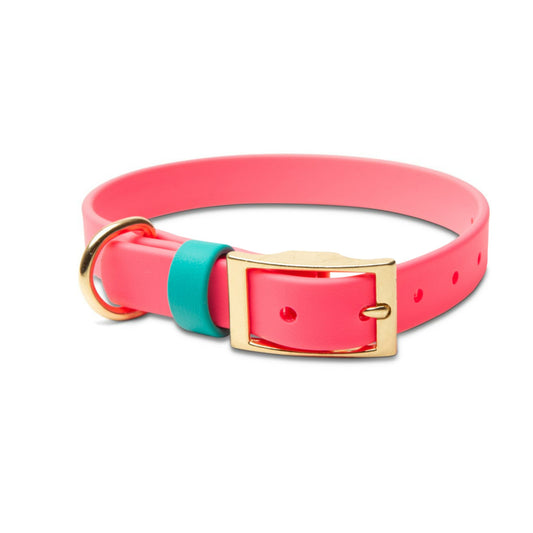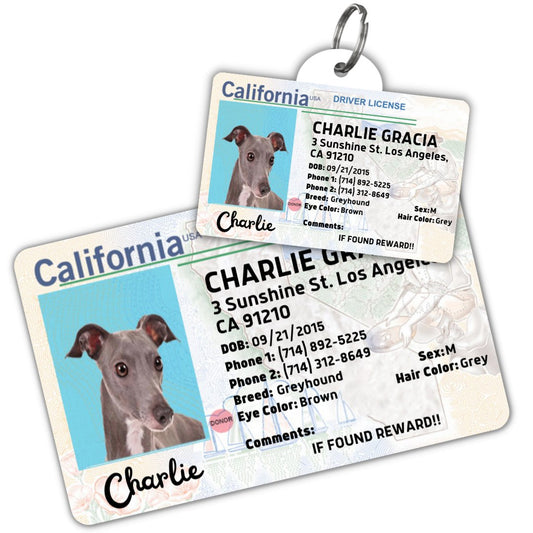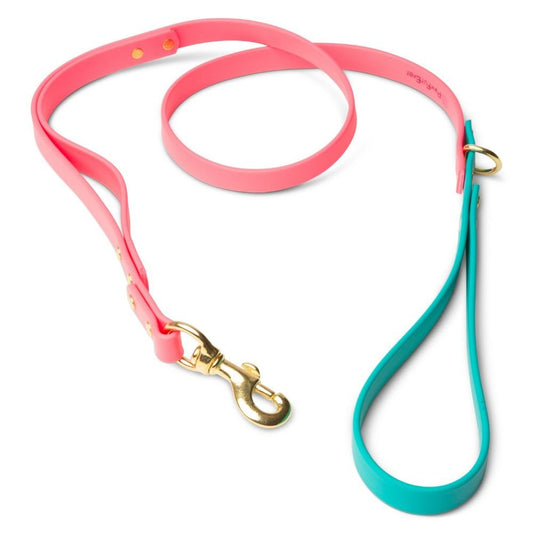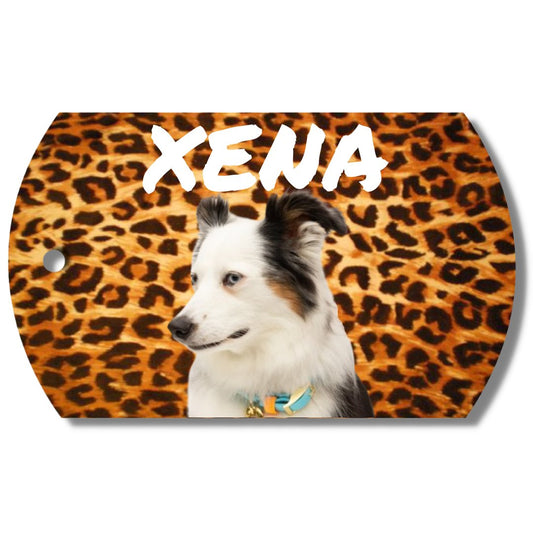
Biothane vs. Leather vs. Nylon: The Complete Leash Material Comparison
Choosing the right leash material affects every aspect of your dog-walking experience—from comfort and control to longevity and maintenance requirements. While biothane leashes for dogs have become the preferred choice among professional trainers and serious pet owners, understanding how this material compares to traditional leather and ubiquitous nylon helps you make informed decisions about equipment that you'll use daily for years. This comprehensive comparison examines each material across critical categories, including durability, weather resistance, maintenance, comfort, cost-effectiveness, and practical performance, revealing why more dog owners are discovering the advantages of waterproof dog leash options made from Biothane.
The leash market has evolved dramatically over the past few decades. What once offered only leather or basic rope has expanded to include synthetic materials explicitly engineered for pet applications. Yet not all modern materials deliver on their promises, and traditional materials maintain certain advantages despite their limitations. Understanding the genuine pros and cons of each option—beyond marketing claims—empowers you to select equipment matching your specific needs, lifestyle, and budget.
Understanding Each Material
Before comparing performance, understanding what each material actually is provides necessary context.
Biothane: Engineered Performance
Biothane represents modern material science applied to pet equipment. The construction involves polyester webbing core wrapped in either TPU (thermoplastic polyurethane) or PVC coating. This creates an entirely waterproof, incredibly durable material that combines the best attributes of traditional materials while eliminating their weaknesses.
Initially developed for equestrian applications in the 1970s, Biothane quickly gained recognition among dog trainers for its superior performance. PawFurEver's Biothane leashes showcase the material's premium qualities through handcrafted USA construction that ensures consistent quality.
Leather: Classic Material
Leather has served humans for thousands of years across countless applications. For dog leashes, leather offers natural aesthetics, initial suppleness, and traditional appeal. Quality leather leashes use full-grain leather, providing strength and durability when properly maintained.
However, leather is a fundamentally organic material that responds to environmental conditions in ways that synthetic alternatives don't. This responsiveness creates both appeal and challenges depending on circumstances.
Nylon: Budget-Friendly Synthetic
Nylon webbing dominates pet stores due to low manufacturing costs and consumer familiarity. The synthetic material offers basic functionality at accessible price points, making it appealing for budget-conscious buyers or those new to dog ownership.
Yet nylon's prevalence reflects economics and availability more than performance superiority. Understanding its genuine limitations helps set appropriate expectations.
Durability Comparison
Longevity directly impacts total cost of ownership and practical reliability.
Biothane: Decade-Long Performance
Biothane leashes routinely last 10-15 years with regular use, and professional trainers report examples lasting 20+ years. The material resists the common failure modes that destroy other leashes:
-
UV degradation: The coating protects the core from sun damage that weakens nylon
-
Moisture damage: Complete waterproofing prevents rot, mildew, and bacterial breakdown
-
Abrasion resistance: The tough coating withstands rough terrain, concrete, and constant friction
-
Temperature stability: Maintains integrity from freezing cold through extreme heat
This exceptional longevity means one quality Biothane dog leash might be the only leash you ever need for a dog's entire lifetime. PawFurEver's commitment to quality construction ensures their leashes deliver this long-term performance.
Leather: Maintenance-Dependent Lifespan
Quality leather leashes can last 3-5 years with diligent maintenance—regular conditioning, protection from moisture, and careful storage. However, most leather leashes fail much sooner due to:
-
Moisture damage: Water causes stiffening, cracking, and eventual breakdown
-
Rot and mildew: Absorbed moisture promotes bacterial growth and material decomposition
-
UV cracking: Sun exposure dries leather, creating cracks that compromise strength
-
Hardware corrosion: Metal components rust from moisture absorbed by leather
Without consistent maintenance that most busy owners struggle to provide, leather leashes typically last 1-2 years before requiring replacement.
Nylon: Frequent Replacement Necessity
Basic nylon leashes last 6-12 months with regular use, particularly for active dogs or outdoor enthusiasts. Failure occurs through:
-
UV weakening: Sun exposure rapidly degrades nylon strength
-
Abrasion wear: Fraying occurs where leashes contact rough surfaces
-
Moisture retention: While not causing rot like leather, absorbed water weakens fibres
-
Color fading: Vibrant colors bleach to washed-out versions within months
Budget-friendly initial costs can become expensive due to frequent replacements.
Weather Resistance: Critical Real-World Performance
Dogs need walks regardless of the weather, making material performance in varied conditions critically important.
Biothane: True Waterproof Champion
A waterproof dog leash made from Biothane performs identically whether bone-dry or soaking wet. The non-porous coating prevents water absorption at the molecular level. Rain, swimming, muddy trails—none affect the leash's weight, flexibility, or strength.
This consistency provides enormous practical advantages:
-
No waiting for leashes to dry between uses
-
No moisture-related odor development
-
Consistent grip and handling regardless of conditions
-
No degradation from repeated wet-dry cycles
For dogs who swim regularly or owners living in rainy climates, this waterproof performance is invaluable. PawFurEver's biothane collars for dogs provide matching weather resistance, creating complete gear systems that handle any conditions.
Leather: Moisture Vulnerability
Leather's fundamental weakness is water. Even "water-resistant" leather treatments only delay rather than prevent moisture absorption. When leather gets wet:
-
The material stiffens, becoming uncomfortable and difficult to handle
-
Drying causes cracking that compromises structural integrity
-
Absorbed moisture promotes bacterial growth and odor
-
Repeated wetting/drying cycles rapidly age leather, requiring frequent conditioning
For water-oriented dogs or wet climates, leather proves impractical and expensive through rapid deterioration.
Nylon: Absorbent and Slow-Drying
Nylon absorbs water readily, becoming heavy, uncomfortable, and slow to dry. A nylon leash after rain or swimming:
-
Increases in weight, making handling awkward
-
Requires hours to dry completely
-
Develops persistent "wet dog" odors from absorbed moisture
-
Becomes slippery when wet, compromising grip
While nylon won't deteriorate from moisture as dramatically as leather, the practical handling issues and odor problems create significant disadvantages.
Maintenance Requirements
Time and effort required to maintain equipment affects real-world usability.
Biothane: Virtually Maintenance-Free
Biothane leashes require essentially zero special maintenance. When dirty, wipe with damp cloth or rinse under water. That's it. No conditioning, no special cleaners, no lengthy drying periods. For busy dog owners, this effortless care means equipment actually stays clean rather than being neglected due to maintenance difficulty.
Professional dog trainers particularly value this aspect—working with multiple dogs daily, easy sanitation between clients is essential. Biothane wipes clean in seconds.
Leather: High-Maintenance Material
Leather demands regular attention to maintain even basic functionality:
-
Monthly conditioning to prevent drying and cracking
-
Protection from moisture exposure
-
Careful drying if wetted, followed by conditioning
-
Special cleaning products for stain removal
-
Proper storage away from temperature extremes
Most dog owners lack time or inclination for this maintenance, leading to prematurely aged, deteriorated leather leashes.
Nylon: Machine Washable but Degrading
Nylon can be machine-washed, but each wash accelerates wear. The material gradually weakens, colors fade, and structural integrity compromises with repeated cleaning. While easier than leather maintenance, the cleaning-related degradation contributes to nylon's short lifespan.
Grip and Comfort During Use
Your hand contacts your leash for every walk—comfort matters enormously, particularly during extended outings.
Biothane: Comfortable and Secure
Biothane leashes offer soft, supple feel similar to quality leather but with advantages:
-
Slight natural tackiness provides secure grip even when wet
-
Doesn't cause rope burn during sudden pulls
-
Maintains consistent feel regardless of temperature
-
Comfortable to hold for extended periods
PawFurEver's Biothane leashes balance firmness for control with suppleness for comfort—critical for walks lasting an hour or more.
Leather: Initially Comfortable, Eventually Stiff
New leather leashes feel wonderful—soft, substantial, pleasant to grip. However, this comfort deteriorates:
-
Leather stiffens with age, particularly after moisture exposure
-
Cracked leather becomes rough and uncomfortable
-
Cold weather makes leather rigid and unpleasant to handle
-
Sudden pulls can cause painful friction burns
Nylon: Slippery and Burn-Prone
Nylon webbing offers the least comfortable grip:
-
Smooth surface becomes slippery when wet or muddy
-
Sharp edges can cause painful rope burns during sudden pulls
-
Thin webbing cuts into hands during sustained tension
-
No natural tackiness for secure grip
Many serious dog walkers wear gloves specifically because nylon causes hand discomfort.
Hygiene and Cleanliness

Equipment sanitation matters for health and pleasant user experience.
Biothane: Supremely Hygienic
The non-porous surface prevents bacterial colonization. Dirt, saliva, and contaminants sit on the surface where they're easily removed. For multi-dog households or professional dog walkers, this sanitizable surface ensures leashes don't become disease vectors.
No odor retention means biothane leashes for dogs never develop the persistent smell that plagues other materials.
Leather: Bacteria Harbor
Porous leather absorbs oils, saliva, and bacteria. Even thorough cleaning can't fully sanitize the material—contamination penetrates where cleaning products cannot reach. Over time, leather leashes develop permanent odors impossible to eliminate.
Nylon: Odor Retention
While nylon can be washed, it retains odors in the fibers. The characteristic "wet dog leash" smell familiar to nylon users persists despite repeated washing. For equipment used daily, this ongoing odor issue proves frustrating.
Cost Analysis: True Value Over Time
Initial price tells only part of the cost story—lifespan determines actual value.
Biothane: Premium Investment, Superior Value
A quality Biothane dog leash from PawFurEver costs $30-50 typically. With 10-15 year lifespan, annual cost is $2-5. Factor in zero maintenance costs, and value becomes exceptional.
Leather: Expensive Short-Term
Quality leather leashes cost $40-80. With 1-2 year practical lifespan (given typical maintenance neglect), annual cost is $20-80. Add conditioning products, and leather becomes expensive.
Nylon: Cheap Initially, Expensive Through Replacement
Nylon leashes cost $10-20. With 6-12 month lifespan, annual cost is $10-40. Multiply by 10-15 years of dog ownership, and you'll spend $100-600 replacing nylon leashes that one Biothane leash outlasts.
Aesthetic Considerations
Appearance matters to owners who want equipment reflecting their style and values.
Biothane: Leather-Like Appearance, Better Performance
Biothane collars for dogs and leashes closely resemble leather aesthetically while offering superior functionality. Available in multiple colors, the material maintains vibrant appearance through years of UV exposure. PawFurEver's duo-tone options create distinctive looks impossible with traditional materials.
Leather: Classic but Deteriorating
Leather offers timeless aesthetics when new. However, the material's visual appeal deteriorates as it ages, cracks, and discolors. Within months, pristine leather becomes visibly worn.
Nylon: Basic and Fading
Nylon offers the least appealing aesthetics—basic webbing that fades rapidly with sun exposure. After months of use, bright colors become washed-out shadows of their original vibrancy.
Making the Right Choice for Your Needs
Understanding these comparisons helps you select equipment matching your specific situation.
Choose Biothane When:
-
You want "buy it once" equipment lasting years
-
Your dog swims or you live in rainy climates
-
Easy maintenance matters for busy lifestyles
-
You value professional-grade performance
-
Long-term value outweighs higher initial cost
Choose Leather When:
-
You prioritize traditional aesthetics above all
-
Your dog stays primarily indoors in controlled environments
-
You genuinely enjoy leather maintenance as hobby
-
Budget accommodates frequent replacement
Choose Nylon When:
-
Immediate budget is primary concern
-
You're unsure about dog ownership commitment
-
You need temporary equipment for foster situations
-
Appearance and longevity aren't priorities
The PawFurEver Difference
When selecting Biothane equipment, manufacturer quality matters enormously. PawFurEver's handcrafted USA-made leashes and collars demonstrate attention to detail, quality hardware, and construction expertise that ensures products deliver the performance Biothane promises.
Their biothane collars for dogs complement their leashes perfectly, creating coordinated systems that provide reliable service through years of daily use. The investment in quality from manufacturers who understand what dog owners genuinely need ensures your equipment serves you reliably rather than disappointing through shortcuts and inferior construction.
Conclusion
The comparison reveals clear winner in the Biothane vs. leather vs. nylon debate for most dog owners. Biothane leashes combine the best attributes of each traditional material while eliminating their weaknesses—leather's supple feel without moisture vulnerability, nylon's low maintenance without poor durability, and superior performance that neither traditional material can match.
For dog owners seeking equipment that performs reliably through any conditions, requires minimal maintenance, lasts years rather than months, and provides professional-grade quality, Biothane represents the obvious choice. When sourced from quality manufacturers like PawFurEver, these leashes and collars become trusted tools that serve faithfully throughout your dog's entire life.
Frequently Asked Questions
1. Is Biothane really better than leather for dog leashes?
Yes, for most practical applications. Biothane offers leather's strength and comfortable feel but with complete waterproofing, zero maintenance requirements, superior durability (10-15 years vs. 1-2 years), and resistance to cracking or stiffening. Only those prioritizing traditional aesthetics over performance might prefer leather.
2. Why are Biothane leashes more expensive than nylon?
Quality Biothane leashes cost more initially but last 10-20 times longer than nylon. One $40 Biothane leash lasting 15 years costs less overall than replacing $15 nylon leashes every year ($225 total). The superior performance, comfort, and weather resistance provide additional value beyond pure economics.
3. Can you use Biothane leashes for dogs who swim daily?
Absolutely! Biothane is completely waterproof and performs identically wet or dry. It's ideal for water-loving dogs—the leash won't become heavy, won't develop odors, dries within minutes, and won't deteriorate from constant water exposure. Many dock diving and water retrieval trainers use exclusively Biothane equipment.
4. Do Biothane dog collars and leashes work in all weather conditions?
Yes. Biothane maintains consistent flexibility and performance from freezing temperatures through extreme heat. Unlike leather that stiffens in cold or nylon that weakens in sun, Biothane handles all weather without degradation. The waterproof construction means rain, snow, and mud don't affect functionality.
5. How long do Biothane leashes actually last compared to other materials?
Quality Biothane leashes typically last 10-15 years with regular use, with many professional trainers reporting 20+ year lifespans. Compare this to nylon (6-12 months), basic leather (1-2 years), or well-maintained leather (3-5 years). PawFurEver's handcrafted construction ensures leashes reach these longevity expectations.





